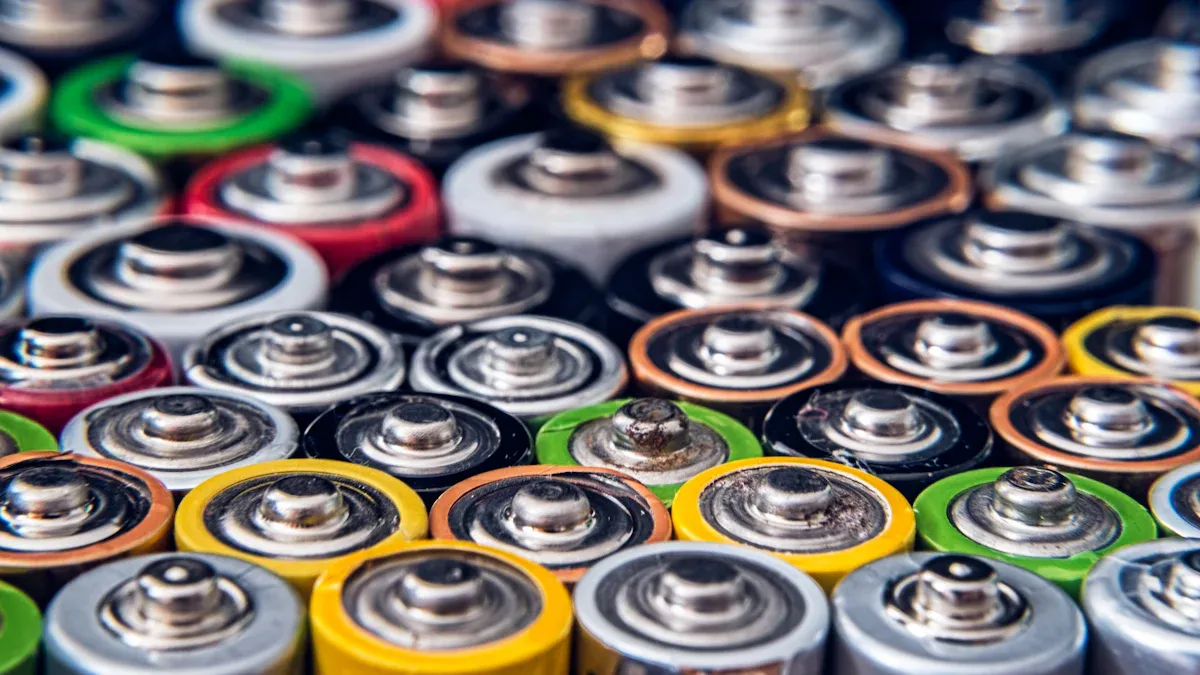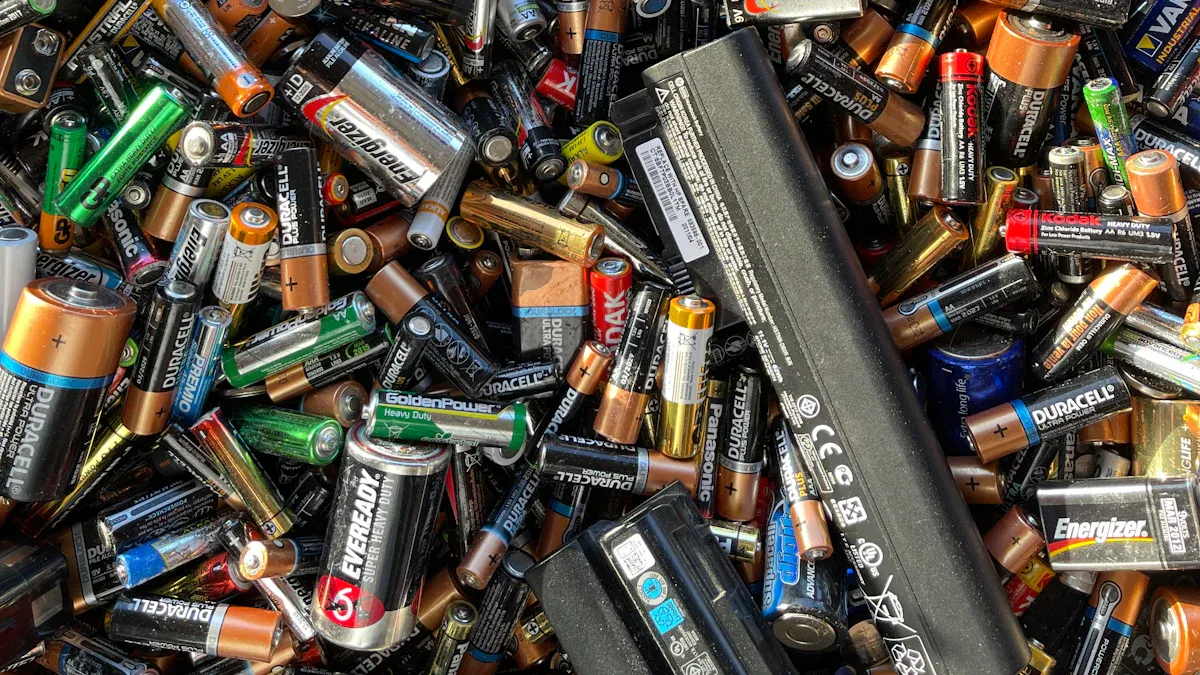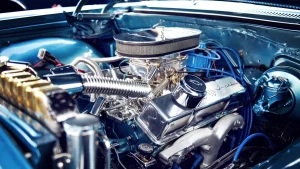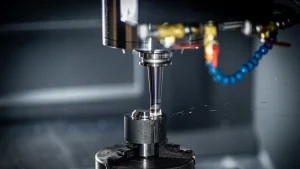
Cost-efficiency plays a pivotal role in lithium-ion battery production, where material costs dominate overall expenses. For instance:
- Material costs constitute 78% of total cell costs for LFP chemistry and over 82% for NMC811 chemistry.
- Innovations like dry coating significantly reduce production costs.
- Recycling improvements further enhance cost savings.
Electrodes, as core components, directly influence battery performance and cost. Graphite electrodes, known for their superior energy efficiency and thermal stability, offer a cost-effective alternative to traditional materials. Their versatility in applications, such as graphite susceptor and graphite coating, underscores their value in modern battery technology.
Key Takeaways
- Graphite electrodes cost less than traditional ones because materials are cheaper.
- They store more energy and handle heat better, improving battery use in electric cars.
- Graphite electrodes help the environment by cutting carbon emissions and being easy to recycle.
The Role of Electrodes in Lithium-Ion Batteries
Key components and their functions
Electrodes are essential components in lithium-ion batteries, enabling energy storage and transfer. Each component within the battery plays a distinct role in ensuring efficient operation. The table below outlines the primary components, their functions, and the materials used:
| Component | Function | Material Used | Advantages/Disadvantages |
|---|---|---|---|
| Anode | Stores lithium ions during charging and releases them during discharging | Graphite | High energy density, reversible insertion reaction, low maintenance |
| Cathode | Recombines lithium ions with electrons during discharge | Lithium cobalt oxide, lithium manganese oxide, lithium iron phosphate | High voltage (up to 3.6V), suitable for high-power applications, no memory effect |
| Electrolyte | Conducts lithium ions between anode and cathode | Ether | Facilitates ion movement, essential for battery operation |
| Separator | Prevents direct contact between anode and cathode | Micro-permeable material | Ensures safety by preventing short circuits, allows ion flow |
| Overall Battery | Provides energy storage and delivery for various applications | Lithium-ion technology | High energy density (up to 330 Wh/kg), low self-discharge rate (1.5-2% per month) |
The anode and cathode, as the primary electrodes, directly influence the battery’s energy density and cycle life. Graphite electrodes, in particular, are widely used for their high energy density and stability, making them a cornerstone of modern lithium-ion battery technology.
Importance of electrode materials in cost and performance
The choice of electrode materials significantly impacts both the cost and performance of lithium-ion batteries. Advanced materials like silicon-based anodes and nanostructures have revolutionized battery efficiency. These innovations enhance charge cycle speed, reduce stress during reactions, and increase capacity. For example:
- Silicon-based anodes improve charge cycle efficiency and capacity.
- Nanostructures reduce strain on electrodes, extending their lifespan.
- Alloying materials like silicon and germanium offer greater capacities than traditional graphite anodes.
From a cost perspective, electrode materials like NMC and LFP present distinct trade-offs. NMC electrodes require higher initial investments due to their energy density, but they deliver superior performance. In contrast, LFP electrodes have lower energy density, leading to higher production costs, but their longer cycle life reduces the total cost of ownership. Graphite electrodes strike a balance by offering cost-efficiency and high performance, making them a preferred choice in the industry.
Cost Comparison: Graphite Electrodes vs. Traditional Electrodes

Material costs and availability
Material costs and availability play a crucial role in determining the overall cost-efficiency of electrodes. Graphite electrodes are widely recognized for their affordability compared to traditional materials like copper. For instance, the total cost of graphite electrodes is approximately $211, significantly lower than the $466.95 cost of copper electrodes. When factoring in increased throughput due to faster burn times, the effective cost of graphite electrodes drops further to $68.90, while copper remains unchanged at $466.95.
The market for graphite electrodes continues to expand, with a projected growth from 1.67 thousand kilotons in 2025 to 1.98 thousand kilotons by 2030, reflecting a compound annual growth rate (CAGR) of 3.55%. This growth is driven by increasing demand across industries, including lithium-ion battery production. However, rising raw material costs, particularly for needle coke, have led to price increases, with high-power graphite electrodes priced between $2,990 and $3,150 per ton and ultra-high-power variants ranging from $3,460 to $3,940 per ton. Despite these fluctuations, graphite electrodes remain a cost-efficient choice due to their superior performance and availability.
Manufacturing processes and cost implications
The manufacturing processes for graphite electrodes offer significant cost advantages over traditional electrodes. Graphite electrodes require less milling and polishing time, reducing overall production costs. For example, electrode fabrication costs are lower for graphite, and tooling consumption is minimized compared to traditional materials. These efficiencies translate into reduced operational expenses for manufacturers.
Graphite electrodes also exhibit higher wear improvement, which decreases the frequency of replacements and further lowers long-term costs. In contrast, traditional electrodes demand more extensive machining and polishing, increasing production time and expenses. The enhanced durability and efficiency of graphite electrodes make them a preferred option for industries seeking to optimize production costs without compromising quality.
Performance and Efficiency of Graphite Electrodes

Energy density and charge capacity
Graphite electrodes play a pivotal role in enhancing the energy density and charge capacity of lithium-ion batteries. Their unique structure allows for the efficient storage and release of lithium ions during charge and discharge cycles. This property ensures that batteries equipped with graphite electrodes deliver higher energy density, making them suitable for applications requiring compact and lightweight designs, such as electric vehicles and portable electronics.
The layered atomic structure of graphite facilitates the reversible insertion and extraction of lithium ions. This process, known as intercalation, minimizes energy loss and maximizes charge retention. Compared to traditional electrode materials, graphite electrodes exhibit superior charge capacity, enabling batteries to store more energy per unit weight. This efficiency not only improves battery performance but also reduces the frequency of recharging, offering significant convenience to end-users.
Thermal stability and conductivity
Graphite electrodes excel in thermal stability and conductivity, making them ideal for high-performance battery applications. Their high electrical conductivity ensures efficient electron movement, which enhances the overall energy transfer within the battery. Additionally, graphite’s low thermal expansion coefficient maintains its structural integrity under extreme temperatures, ensuring consistent performance.
Several properties of graphite contribute to its exceptional thermal stability:
- High electrical conductivity facilitates efficient electric arc formation.
- Resistance to thermal shock ensures durability in high-temperature environments.
- A high melting point allows graphite to withstand severe conditions without degradation.
These characteristics make graphite electrodes reliable in demanding applications, such as electric vehicles and renewable energy storage systems. Their ability to maintain performance under thermal stress further underscores their value in modern lithium-ion battery technology.
Lifespan and Durability of Graphite Electrodes
Cycle life and degradation rates
Graphite electrodes demonstrate exceptional durability, making them a reliable choice for lithium-ion battery production. Their ability to maintain structural integrity over extended cycles ensures consistent performance. Unlike traditional materials, graphite electrodes exhibit lower degradation rates due to their stable atomic structure. This stability minimizes the formation of dendrites, which can compromise battery efficiency and safety.
A lifecycle analysis highlights the durability of graphite electrodes in industrial applications. The table below outlines key features contributing to their longevity:
| Feature | Description |
|---|---|
| High Current Carrying Capacity | Enables efficient melting of scrap metal, leading to lower energy costs. |
| Longer Lifespan | Reduces the frequency of replacements and maintenance. |
| Overall Durability | Contributes to effectiveness in industrial applications like steelmaking. |
These attributes make graphite electrodes a cost-effective solution for manufacturers seeking to enhance battery lifespan while reducing operational disruptions.
Maintenance and replacement costs
Graphite electrodes offer significant advantages in terms of maintenance and replacement expenses. Their longer lifespan reduces the need for frequent replacements, leading to lower overall costs. Additionally, their high wear resistance minimizes maintenance requirements, further enhancing cost-efficiency.
A cost analysis comparing graphite and copper electrodes underscores this benefit. The total production cost of graphite electrodes is $211, significantly lower than the $466.95 cost of copper electrodes. This affordability, combined with reduced maintenance demands, makes graphite electrodes an economically viable option for long-term use.
By choosing graphite electrodes, manufacturers can achieve substantial savings in both production and operational costs. Their durability and low maintenance requirements position them as a preferred material in industries prioritizing efficiency and reliability.
Environmental Impact of Graphite Electrodes
Sustainability and production processes
Graphite electrodes contribute to sustainability through their efficient production processes and reduced environmental footprint. Manufacturers utilize advanced machining techniques to minimize waste and optimize energy consumption. These processes lower carbon emissions, making graphite electrodes a more eco-friendly choice compared to traditional materials.
Environmental assessments highlight the relationship between machining variables and carbon emissions. The table below illustrates key findings from statistical evaluations:
| Figure | Description |
|---|---|
| Fig. 14 | Analysis of the mean effects of machining variables on carbon emissions from electrode consumption. |
| Fig. 15 | Analysis of the mean effects of machining variables on carbon emissions from dielectric consumption. |
| Fig. 16 | Analysis of the mean effects of machining variables on carbon emissions from electrode erosion, showing the relationship between machining variables and carbon emissions. |
These insights underscore the importance of optimizing production processes to achieve sustainability goals. By adopting efficient machining practices, manufacturers reduce the environmental impact of graphite electrode production while maintaining high-quality standards.
Comparison with traditional electrode materials
Graphite electrodes outperform traditional materials in terms of environmental impact. Copper and other conventional electrodes require energy-intensive extraction and processing methods, which generate significant greenhouse gas emissions. In contrast, graphite electrodes rely on less resource-intensive production techniques, reducing their overall carbon footprint.
The recyclability of graphite electrodes further enhances their sustainability. Unlike traditional materials, graphite can be repurposed without compromising its structural integrity. This property reduces waste and supports circular economy initiatives. Additionally, graphite electrodes exhibit lower erosion rates during use, which minimizes material loss and contributes to long-term environmental benefits.
By choosing graphite electrodes, industries align with global efforts to reduce emissions and promote sustainable practices. Their eco-friendly attributes make them a preferred option for applications requiring both performance and environmental responsibility.
Long-Term Cost Benefits of Graphite Electrodes
Total cost of ownership
Graphite electrodes offer significant long-term cost advantages due to their durability, efficiency, and adaptability. Their extended lifespan reduces the frequency of replacements, which minimizes operational disruptions and lowers maintenance expenses. Industries relying on energy-intensive processes, such as steel production, benefit from the high current-carrying capacity of graphite electrodes. This feature ensures efficient energy transfer, reducing electricity consumption and operational costs.
The growing demand for steel, driven by urbanization and industrialization, further highlights the cost-effectiveness of graphite electrodes. The adoption of Electric Arc Furnace (EAF) technology, which relies heavily on these electrodes, has proven to be both energy-efficient and environmentally friendly. EAF technology produces lower carbon emissions compared to traditional methods, aligning with global sustainability goals. The table below summarizes key factors contributing to the long-term cost benefits of graphite electrodes:
| Factor | Description |
|---|---|
| Demand for Steel | Increasing due to urbanization and industrialization, leading to higher graphite electrode usage. |
| EAF Technology | Energy-efficient and lower carbon emissions compared to other processes, enhancing cost-effectiveness. |
| Technological Breakthroughs | Innovations in electrode manufacturing are driving market growth and efficiency. |
Balancing initial investment with long-term savings
While the initial investment in graphite electrodes may appear higher than some alternatives, their long-term savings outweigh the upfront costs. Their superior thermal stability and wear resistance ensure consistent performance over extended periods, reducing the need for frequent replacements. This reliability translates into lower total production costs and improved operational efficiency.
Graphite electrodes also support energy savings through their high electrical conductivity. By optimizing energy usage, they help manufacturers achieve cost reductions while maintaining high-quality output. Over time, these savings accumulate, making graphite electrodes a financially prudent choice for industries prioritizing efficiency and sustainability.
Graphite electrodes outperform traditional materials in cost-efficiency, durability, and environmental impact. Their adoption in Electric Arc Furnace technology and lithium-ion battery production highlights their versatility and market demand. Ningbo VET Energy Technology Co. leads the industry by advancing graphite electrode technology, ensuring sustainable manufacturing and superior performance for modern applications.
FAQ
What makes graphite electrodes more cost-efficient than traditional electrodes?
Graphite electrodes cost less due to lower material expenses and efficient manufacturing processes. Their durability and reduced maintenance needs further enhance long-term cost savings.
How do graphite electrodes contribute to lithium-ion battery performance?
Graphite electrodes improve energy density, charge capacity, and thermal stability. These properties ensure efficient energy storage and transfer, making them ideal for high-performance applications like electric vehicles.
Are graphite electrodes environmentally friendly?
Yes, graphite electrodes have a lower environmental impact. Their production processes generate fewer emissions, and their recyclability supports sustainability and circular economy initiatives.




